I Did Love the Place Then
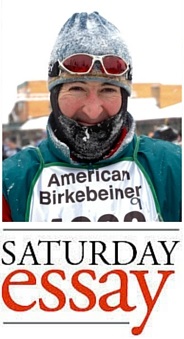 After several hours of splashing around, I pulled myself up to the dock. I held onto the edge and floated. My daughter said, “Your wedding ring is gone.”
After several hours of splashing around, I pulled myself up to the dock. I held onto the edge and floated. My daughter said, “Your wedding ring is gone.”
What kind of kid notices that? I thought she was kidding. Then, I looked at my left hand. No ring.
I spent the next hour swimming with a scuba mask trying to pull off a miracle. The lake water looks like tea because of the tannins. Or maybe even darker like root beer. As I swam down, I could barely see. I hoped to see a little glint in the gravel. It never happened.
So, now I wear a replacement ring. The ring I put on twenty years ago sits at the bottom of the Whiteface Reservoir, a permanent part of the St. Louis River watershed. I sit like Gollum on the dock, sip my gin and tonic, gaze out over the water, and wonder about my precious. My precious.
When I was a kid, I didn’t notice things like rings on my dad’s hand. But I noticed his finger and where it pointed on the topo map. It was deer season in Plymouth, New Hampshire. I was in high school and an important part of the game plan to fill the freezer with venison.
“I’m going to sit here at the top of this drainage,” my dad said. “You walk down the road on this side of the ridge to here. Come over the ridge and walk up the drainage toward me. If you hear a shot, sit down for five minutes. Then, when you hear two shots, it means I found the deer and you can walk to me.” He said drainage so much during the huddle, I thought he was talking about nasal passages instead of a small mountain valley.
With great ceremony, my dad let me carry my grandfather’s old Winchester Model 94 lever action. He also knew I’d never shoot it. I tried hard to be quiet by walking along the top of old stone walls instead of through the leaves. I was like Jim Carrey in Dumb and Dumber: So you’re saying there’s a chance!
I heard a shot. I sat down. Then two shots. (Amazing how we communicated before cell phones.) I walked to the top of the drainage and found my dad elbow deep in a nice deer. Another year when I wouldn’t need to clean Grampie’s rifle that much.
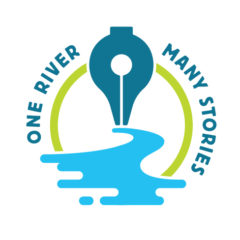 Call it a drainage. Call it a watershed. Whatever you call it, it gives you another perspective. An older perspective. I love maps, but when I look at them, I see roads and borders. When you ask the Internet to show you a map of a watershed, it looks different. A watershed has a shape from long before highways and counties and state forests. To me, it looks like a leaf. The watercourses are the veins. The drainage boundaries are the edges of the leaf. Try it yourself and see if I’m crazy.
Call it a drainage. Call it a watershed. Whatever you call it, it gives you another perspective. An older perspective. I love maps, but when I look at them, I see roads and borders. When you ask the Internet to show you a map of a watershed, it looks different. A watershed has a shape from long before highways and counties and state forests. To me, it looks like a leaf. The watercourses are the veins. The drainage boundaries are the edges of the leaf. Try it yourself and see if I’m crazy.
I have to work to see a watershed, but I’m sure it was second nature for old timers. If they were on foot, they needed to know about the barriers. Is the brook too big to cross? Native Americans had canoes. Later, the voyageurs had 90-pound fur bales to carry. Where could they paddle? Where was the river so dangerous they’d have to portage? Rivers were the highways.
A watershed is elegantly simple. If the raindrop falls here, it runs to the Mississippi. If it falls one foot farther to the east, gravity pulls it toward Lake Superior. It’s like a giant net. Or a funnel. It’s also a filter. And a pump. I think it’s amazing.
We moved here in 2002 during our 9/11-induced family crisis. (You can read more about my sob story in my upcoming memoir. You’ll laugh. You’ll cry. You’ll wish it would stop.) In the years that followed, we explored our neighborhood. Since we live in Duluth, we spend a lot of our time playing where the water runs to the St. Louis River. When I look at this leaf-shaped watershed, the net captures memories of a specific kind of adventure. Low-key. Human scale.
Like the time we topped out on Ely’s Peak. My sister from the east coast and my sister-in-law from the west coast made the summit in the cold, May breeze. My daughter was still in diapers and my son needed encouragement. The clear skies let us take in the broad sweep of the river from the right to the left all the way to the big lake. There was no Disneyland marquee item. But the overall panorama was vast and impressive as we looked over the light green of the emerging leaves. And we watched a train rumble under us as we walked along the Munger Trail that day. More proof that all trails, water and foot and rail, come together at the fond du lac.
My best introduction to the territory came at the spring and fall Wednesday trail races put on by the Northern Minnesota Track Club. Every Wednesday, at a different trail, we bashed through the brush. Hornets. Mud. One time, even bears. But most importantly, I got to sense the rise and fall of the earth with my own two feet. One of the most impressive races is out along the eastern edges of Jay Cooke State Park. The Bull Run starts near Highway 23 two miles south of the bridge over the St. Louis River. You appreciate the excavation performed by the river as you plunge downhill. You appreciate it even more as you struggle back uphill to the finish. I always laugh when people say Minnesota is flat.
I started a trail running project in Jay Cooke State Park in 2014. My idiot dog Leo and I spent 41 different days stringing together all 300 miles of the Superior Hiking Trail. Our first steps on the five-month long effort were up the Grand Portage trail. And up and up and up. We looked at the river as the trail paralleled it above the dam. We looked at the river from Ely’s Peak. From near the Magney ski trails. From Spirit Mountain. There’s Spirit Lake and Spirit Island again, this time from Enger Tower. After a week of running along the river, you start to realize the actual scale of the thing.
In 2004, I ran the Half Voyager Trail Marathon from the Zoo out to Carlton. Toward the end of the race, I was tired and ran stiff-legged like Frankenstein across the famous swinging bridge in Jay Cooke. In 2013, I ran the race again when they named it after Gene: the Eugene Curnow Trail Marathon. The 2012 flood swept the swinging bridge downstream, so the race detoured over by the Bull Run course. During the flood, Forbay Lake broke the levee above the Thomson hydroelectric plant and tore a scar down to the river itself smashing a path right through the highway. The water seeks level. It can’t be stopped. We can pretend to manage water for a while, but it makes its way down. Either peacefully around our manmade structures or violently right through them.
I spent a lot of time on foot, seeing where the water runs to the river. Nobody is going to call me a “waterman” but I’ve paddled a little bit, too. When my son was small, my friend Reed Bowman and I paddled down the Cloquet from below Island Lake. We saw the unusual Side Lake and Hunter Lake as they bulged out the side of the river. My son smeared bribery chocolate on his face while Reed and I paddled like racers into the 20-knot headwinds. If we stopped, we got pushed back upriver by the summer wind so hot it felt like a blow dryer. I’m sure Reed is glad I invited him on that “easy” paddle.
My competitive urges made me sign up for the Deux Pipes race. Nine miles on the St. Louis River. I actually trained. After work, I drove my kayak to Rice Lake just north of the airport. I paddled across this weedy, shallow lake repeatedly that summer. I learned from my barber, Warren Chesney, that the flow out of Rice Lake is called the Beaver River. He told me he floated it once when he was younger. The water makes its way through Fish Lake to the Cloquet to the St. Louis.
I thought I was ready. I signed in for the race at Boy Scout Landing out in Gary/New Duluth. When asked what category I was in, I said I had a 16-foot plastic sea kayak. The lady gave me kind of an “uff da” and signed me in. I was a rookie. What did I know? I looked at the carbon javelins that the other racers were climbing into. I suddenly realized that my steed was slow.
We took a left and headed downriver to the Oliver Bridge. Then we headed upriver all the way to the dam. I was already alone by the time we paddled back past the start. Well, actually Bryan French was near me. As I struggled mightily to achieve 4.5 mph, I told Bryan, “I’m going to join the DFL party.”
“Really? You?” he asked.
“Yeah. Dead Fucking Last.”
Maybe Bryan can remember which of us won the finish sprint. The fact I’ve blocked it out probably means he beat me. I do remember that they were already handing out awards and were only momentarily looking over their shoulders to see when the two stragglers made it. Some people chuckled that we really did Deux Pipes. Two pipes. Apparently the voyageurs stopped every hour for a smoke break. Two pipes means two hours. We took two hours. And nobody actually takes two hours to finish the race. That would be absurd, hardy har har.
One year, when I was still in the Duluth Air Guard, our unit was tasked to go fly alert missions over the President’s ranch. It was over the November holiday in 2002. We flew top cover in Texas instead of eating turkey with our families. We came up with a name: “Operation Deny Thanksgiving.”
Charlie Nelson and I were flying at about two in the morning. We talked on the secondary radio to keep each other awake. He came up with an idea to have a squadron fishing tournament on the St. Louis River. And he did. In 2003, dozens of people and several boats showed up on the river. A couple of guys, not as familiar with the river as Charlie, ran aground. Nobody got hurt, so naturally, it was hilarious. Good shore lunch, nice fish, and lots of funny stories.
The tradition went on for years. One time, I was in Charlie’s boat with Kerry Schaub and Kevin Peterson. Weather threatened. Dark skies and thunder. I was counting the seconds from flash to sound. They all mocked me. I thought it seemed silly to sit out in the middle of Spirit Lake with a bunch of poles sticking up into the sky. They will claim I was in a fetal position at the bottom of the boat sucking my thumb. One lightning bolt hit close enough for everybody and Charlie gunned it to shore on Spirit Island. I hid under a log in the rain for a while until the thunderhead passed. They pointed at me and laughed. Good times.
The flood happened in 2012. This was bad timing for the 10th Annual Fishing Tournament. For one reason or another, the 2013 and 2014 editions didn’t happen either. Finally, in 2015, Kerry set up what we called the “3rd Anniversary of the 10th Annual.”
Charlie and Kerry and Kevin and I went fishing together. Puffy clouds. Blue sky. Walleye. All four of us were in Iraq together. The whole tourney was just the four of us in one boat. Several years of interruptions cut down on attendance. We trolled across Spirit Lake. Charlie’s actually a river guide now. He didn’t go the airline pilot route in retirement like I did. Judging by his smiles on the river, I think he made the wiser choice.
I looked across toward the green slopes of Spirit Mountain. I was in a boat with my battle buddies. It was summer. We were catching fish. I’m rarely so content. I remembered something Sinclair Lewis wrote. He was the first American author to win a Nobel Prize for literature. He lived in Duluth for two years during World War II. He spent a lot of his life moving around the country looking for a place that felt like home. When he was here, his diary entries made it sound like he found some happiness, if only temporarily. He wrote the following after a day on the St. Louis River with some friends on June 24th, 1944:
So for six miles we clicked along toward the main portion of Duluth, with a faint quiet afterglow in the skies even till 11. The hills were at first just a dark bulky haze, then little by little you saw – well, anyway, I mean I saw – the street lights arching up the hill, past the crinkled plane of waters … My God, I did love the place then.
The truth is, I prefer water when it’s frozen. We’re a family of cross-country skiers. We ski across the icy surface of Whiteface Reservoir. We ski around the trails at Boulder Lake. My kids both took their first strides on skis in Duluth. We’ve skied thousands of miles in this drainage. My whole family stands on skis on Bardon’s Peak. We take pictures of Ely’s Peak on one side all the way over to the lift bridge on the other. We follow the river with our eyes. The snow we glide on waits for spring, melts, and ends up right down there in Spirit Lake.
The snow melts and runs into the Beaver and the Cloquet. It melts into the Whiteface Reservoir. Then down the Whiteface River or Waabishkiingwe-ziibi. Then the St. Louis. All the veins meet, go under the rebuilt swinging bridge, and rush by Fond du Lac to the big lake. And then, the light, rusty brown of the spring runoff jets into the deep blue of the lake. A crisp, sharp border between the two colors. Like a giant swirl ice cream cone, but chocolate and blue instead of chocolate and vanilla.
This drainage is like a net that caught my family and me. I swim with my family in a vein of this leaf-shaped watershed. I know where the brown ribbon that streams into the lake comes from. Maybe a few drops drifted past my ring way up on the Whiteface. That ring. That symbol of my love.
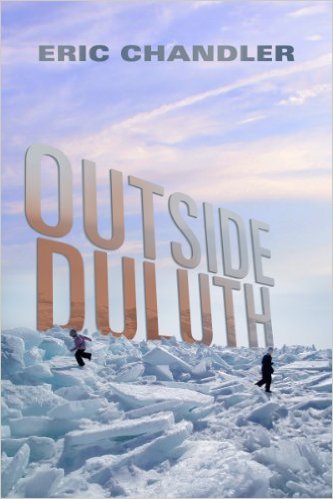 Eric “Shmo” Chandler is a husband, father, and pilot who cross-country skis as fast as he can in Duluth. He’s the author of Outside Duluth, a collection of his magazine articles about family outdoor adventures. Visit his website, Shmotown, for links to his published fiction, nonfiction, books, and poetry.
Eric “Shmo” Chandler is a husband, father, and pilot who cross-country skis as fast as he can in Duluth. He’s the author of Outside Duluth, a collection of his magazine articles about family outdoor adventures. Visit his website, Shmotown, for links to his published fiction, nonfiction, books, and poetry.
Recommended Links:
Leave a Comment
Only registered members can post a comment , Login / Register Here


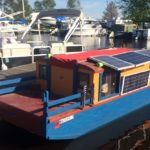


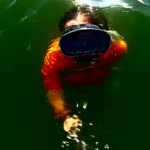








1 Comment
Chris Bacigalupo
about 9 years ago